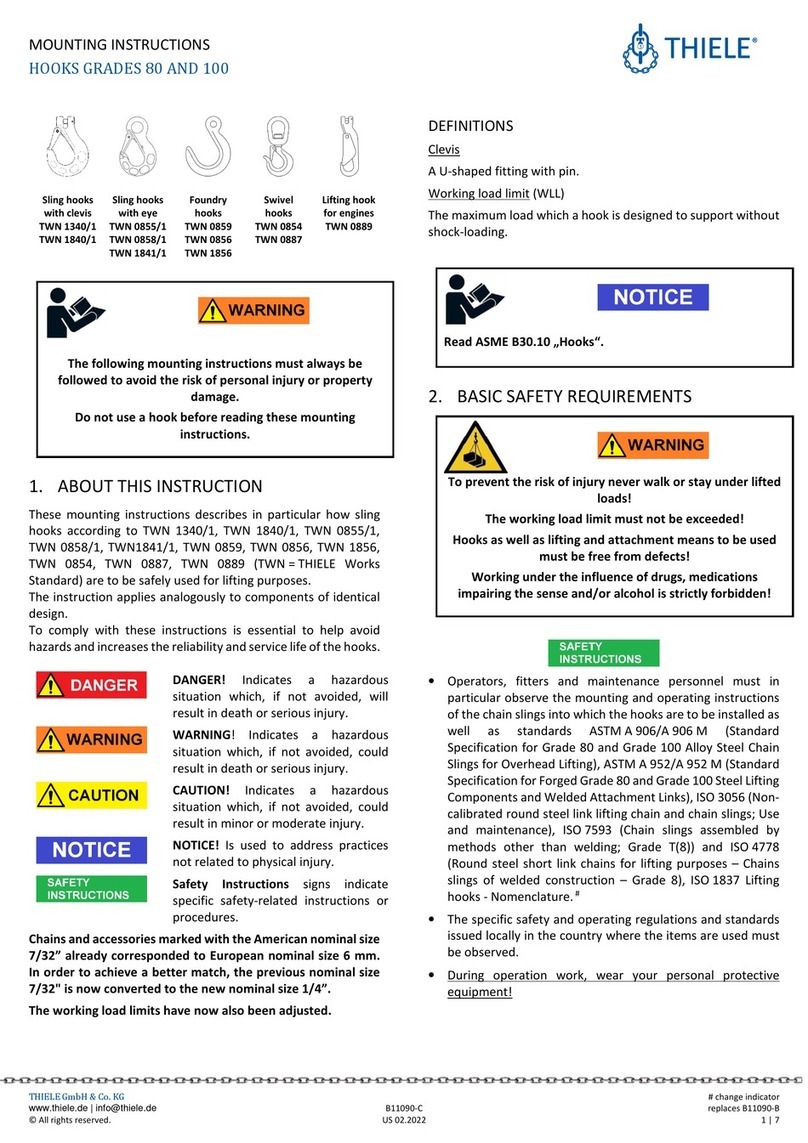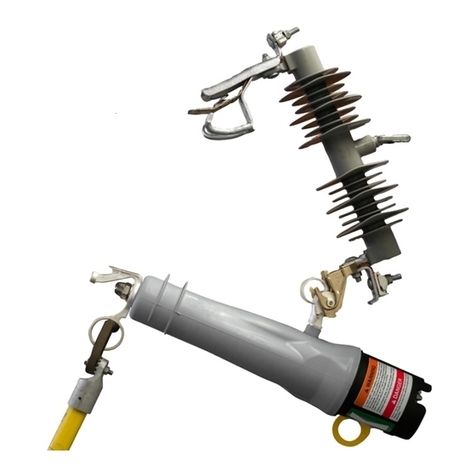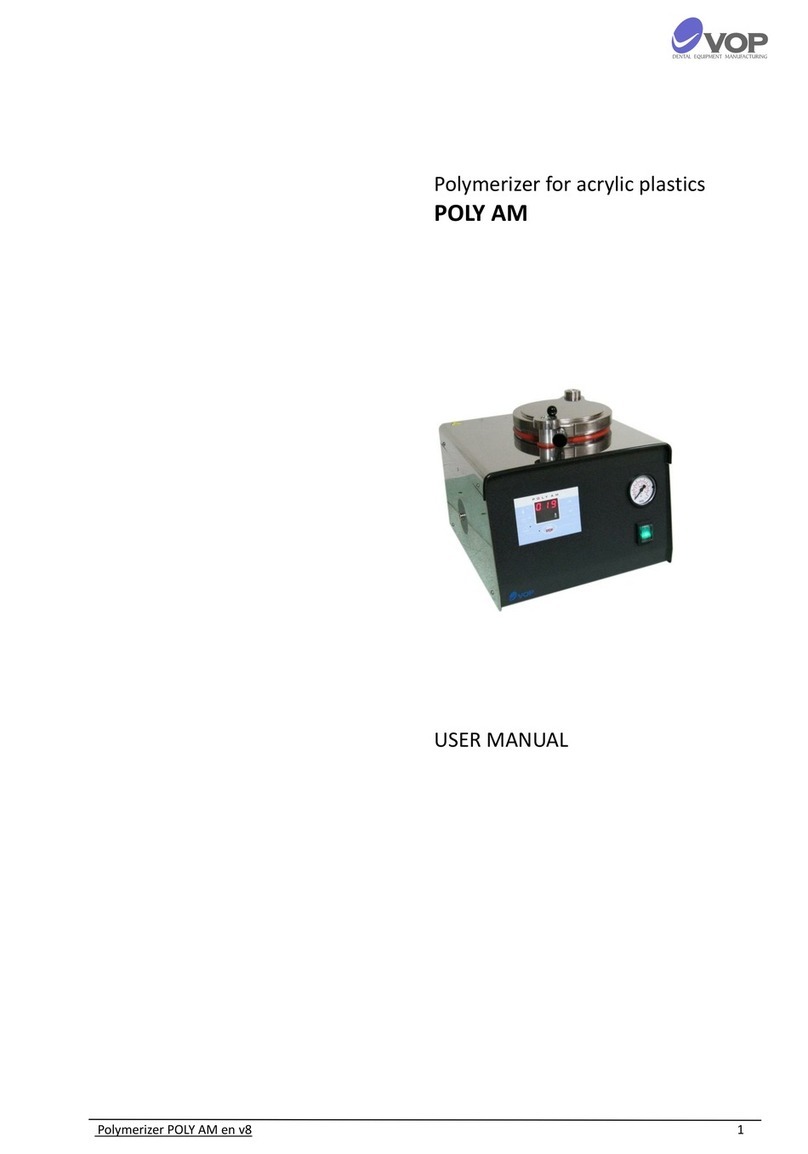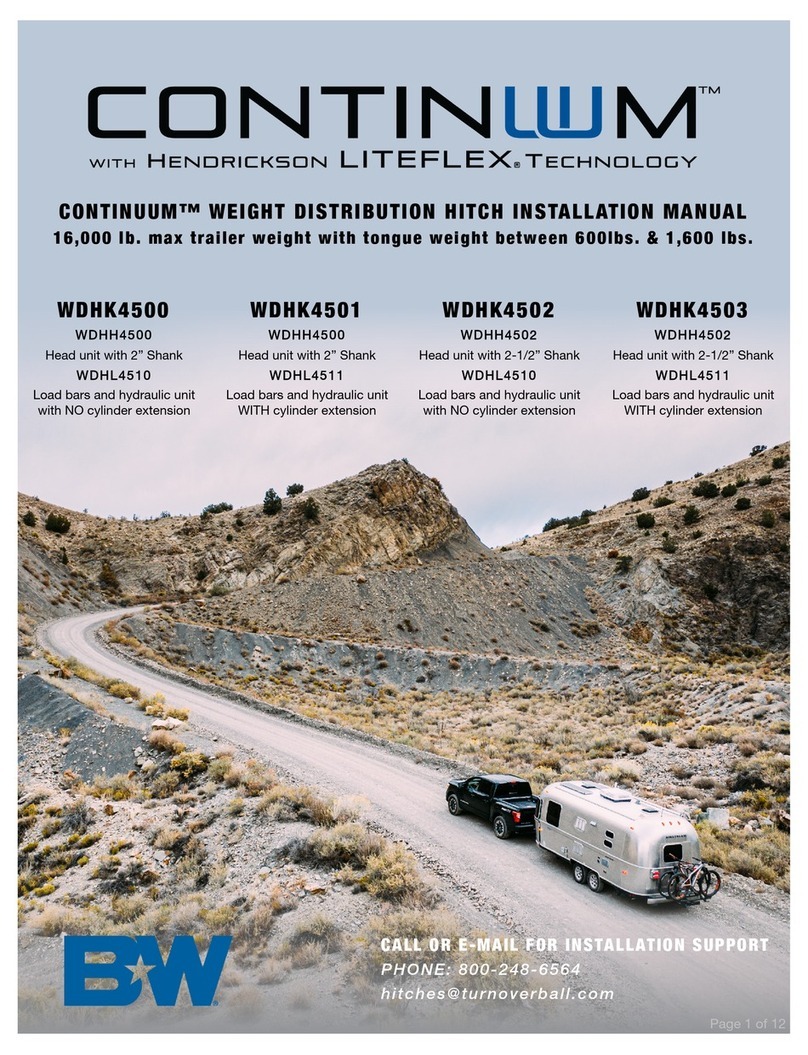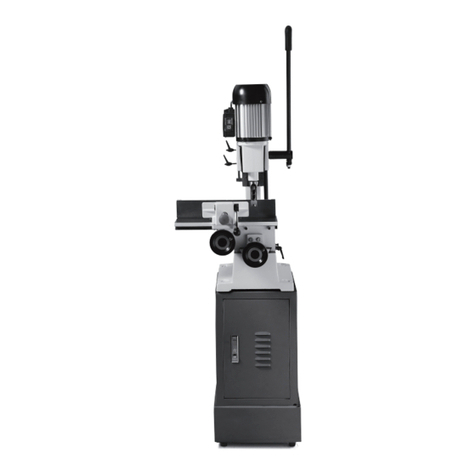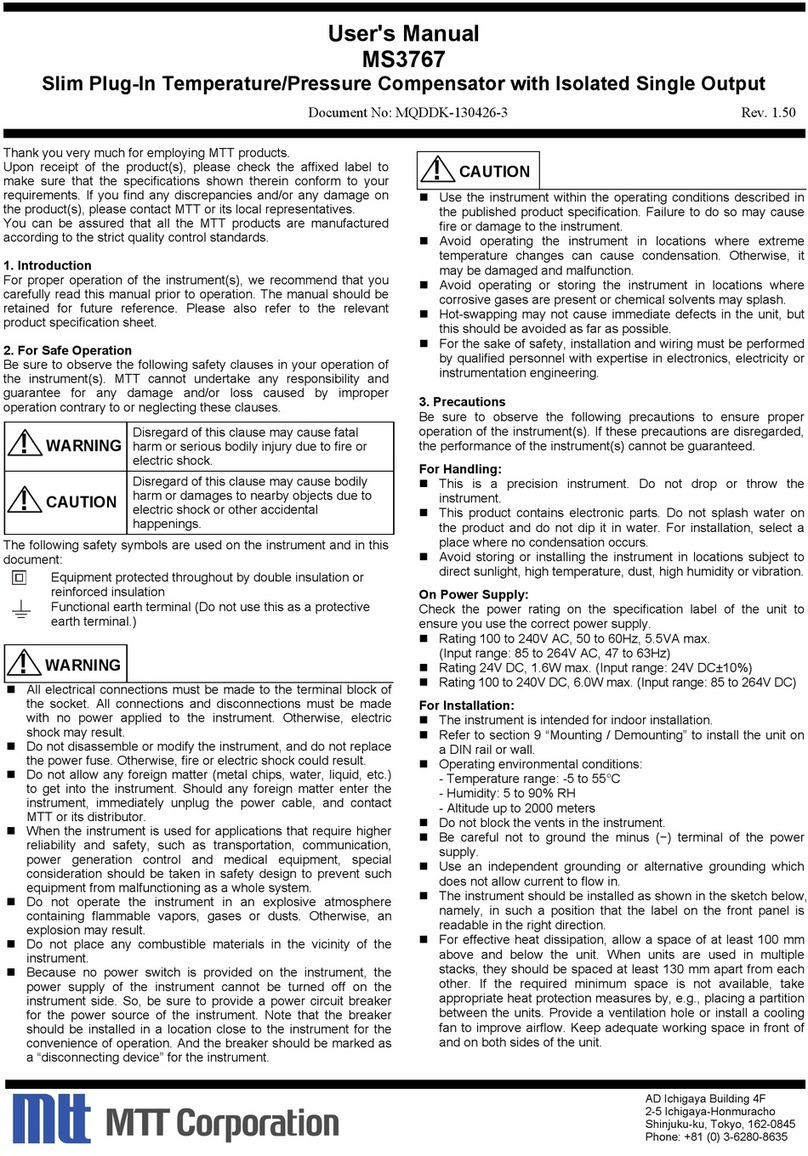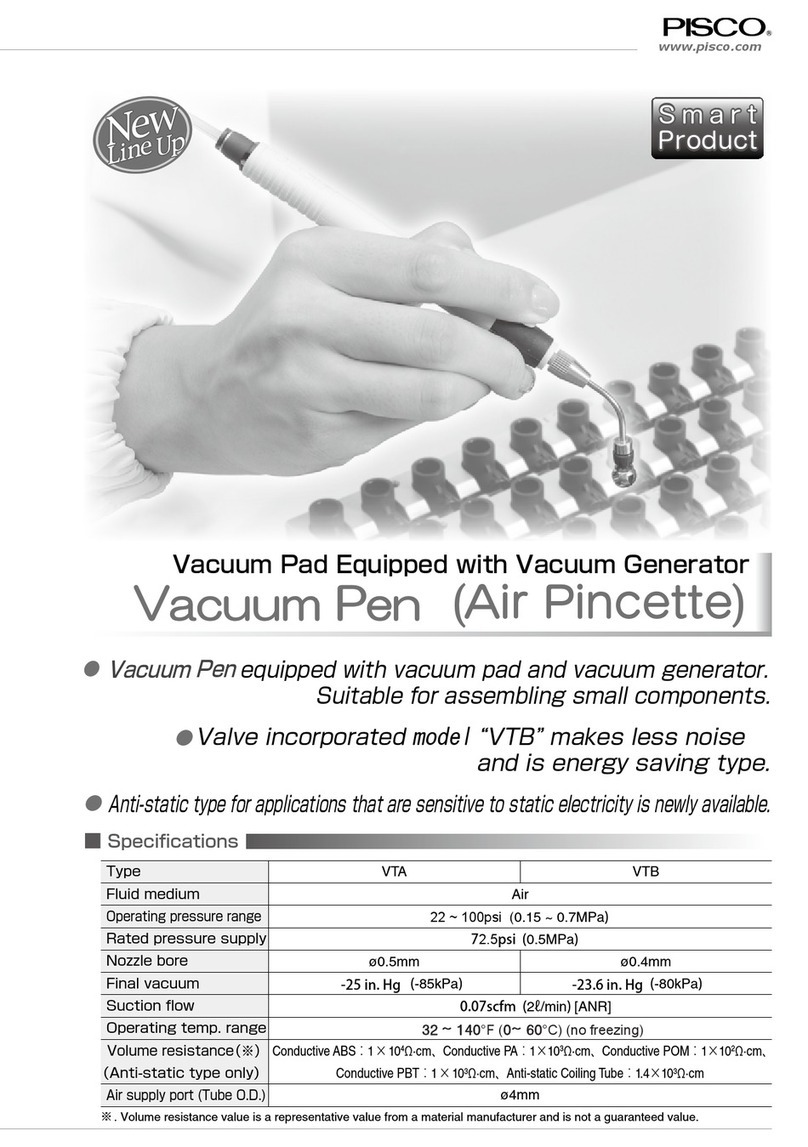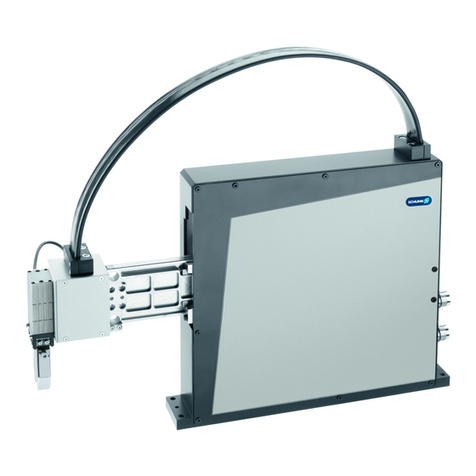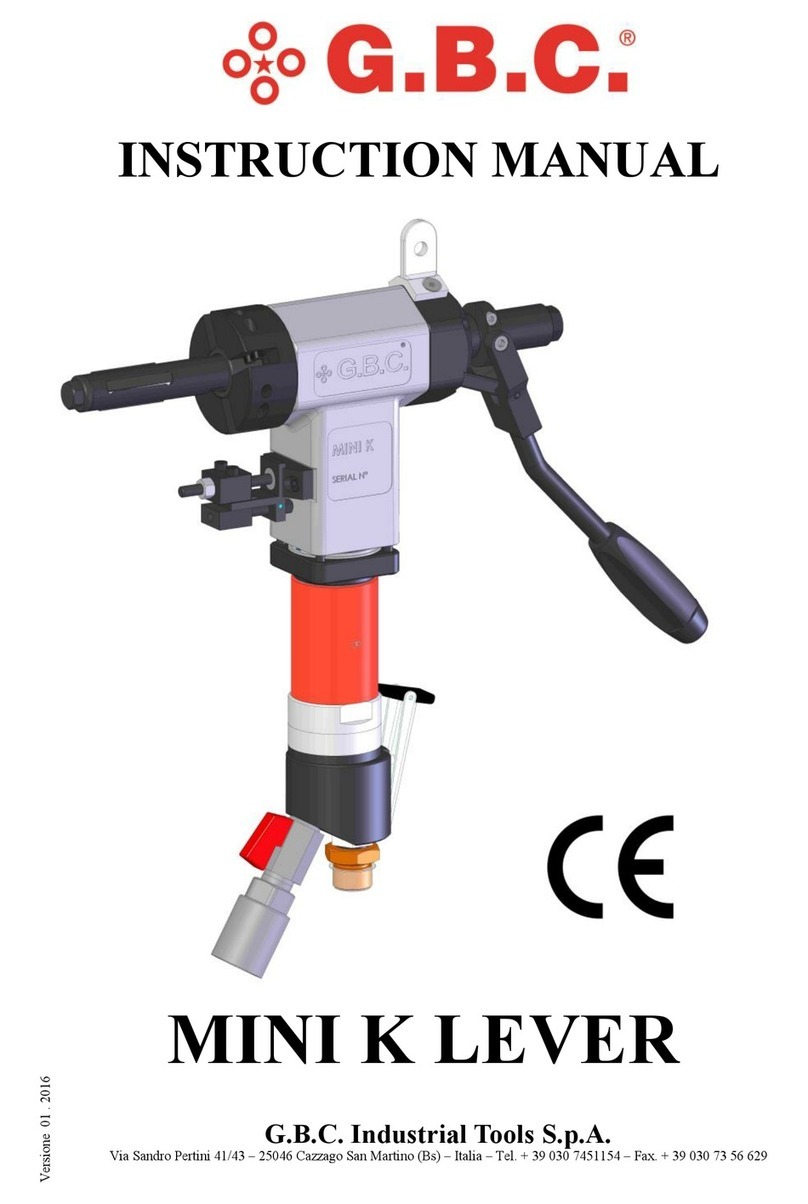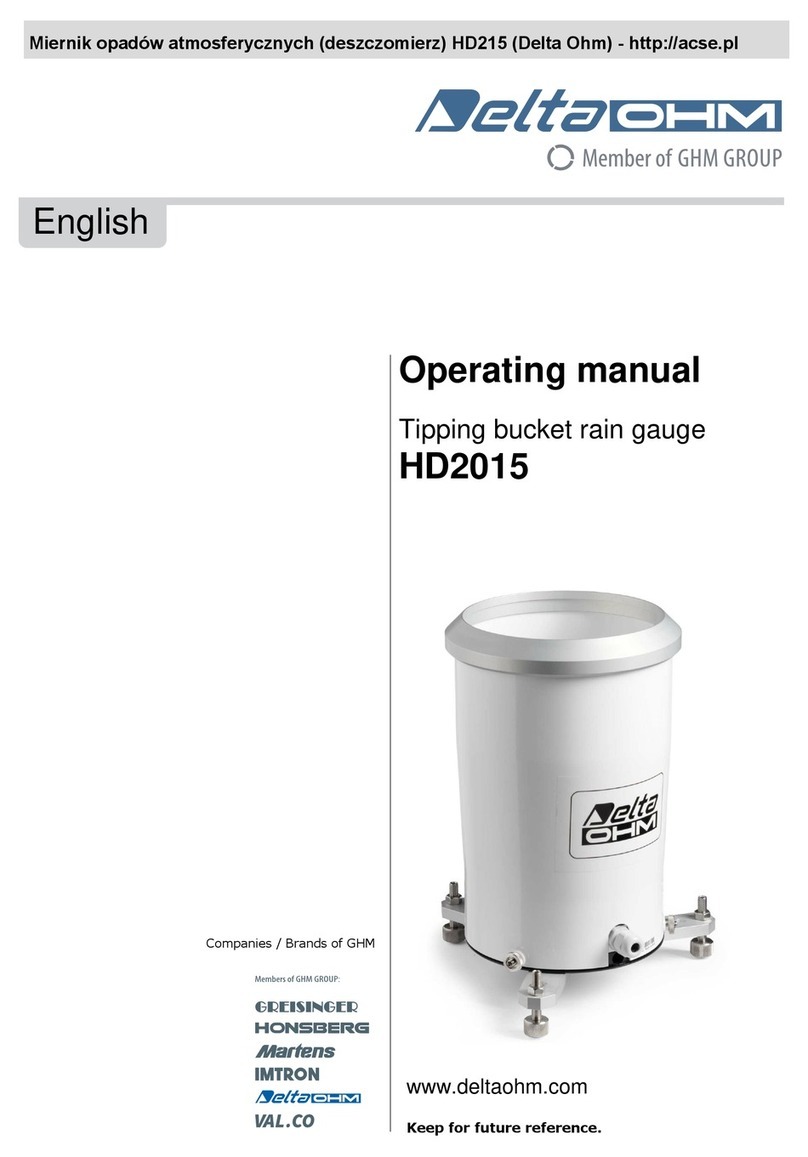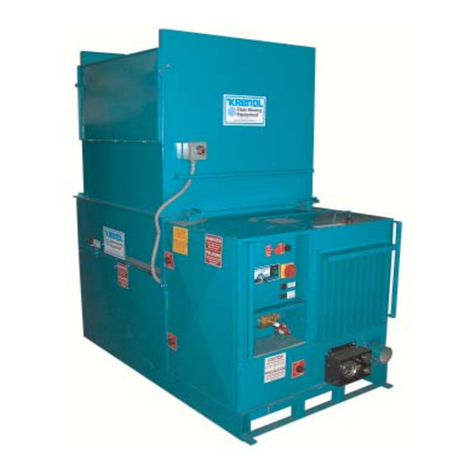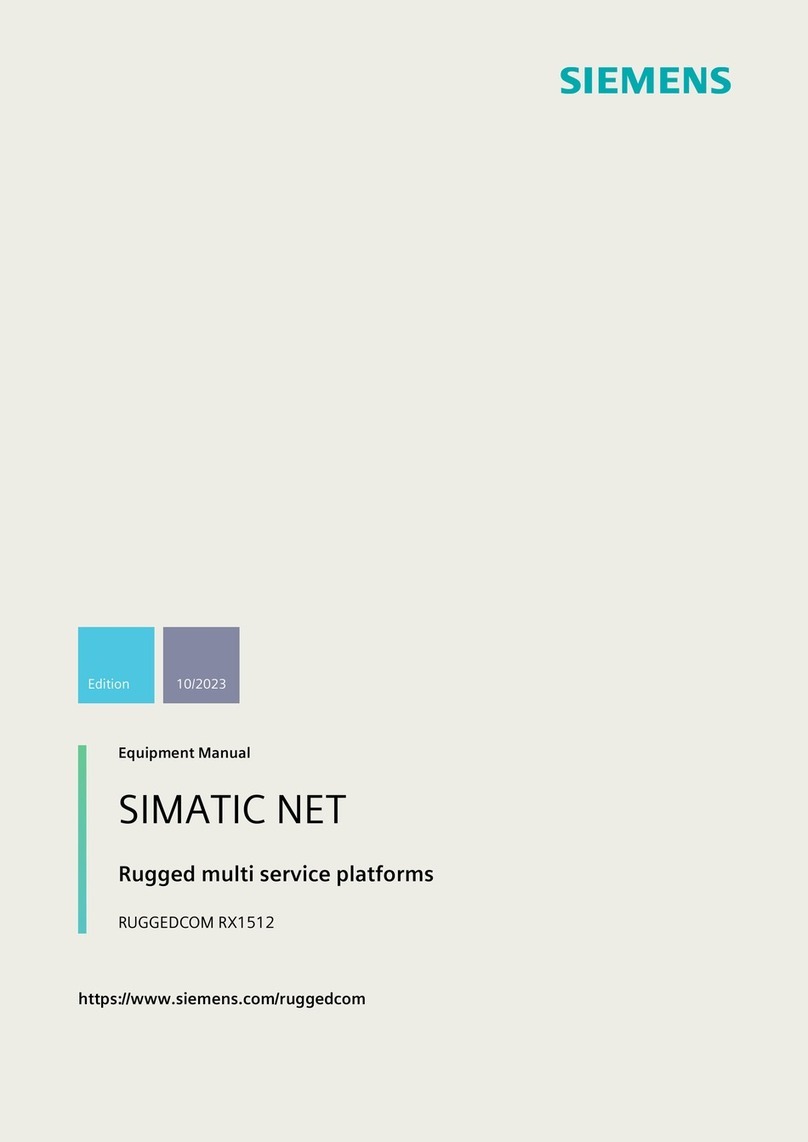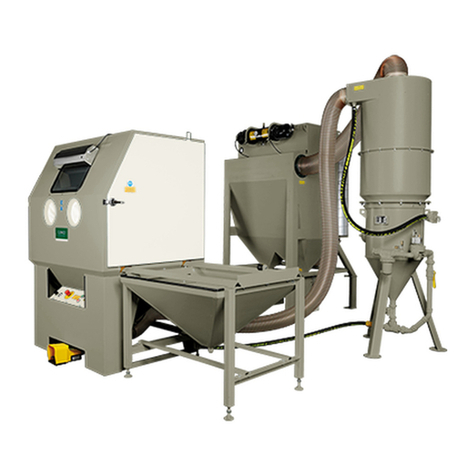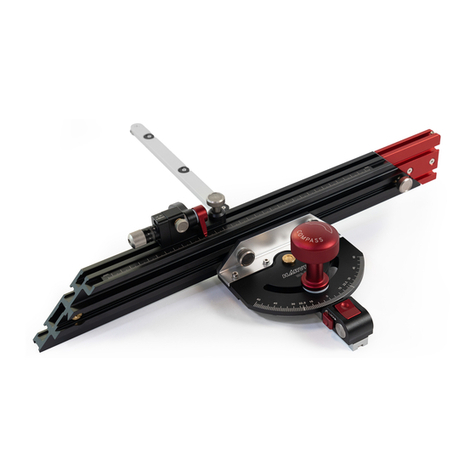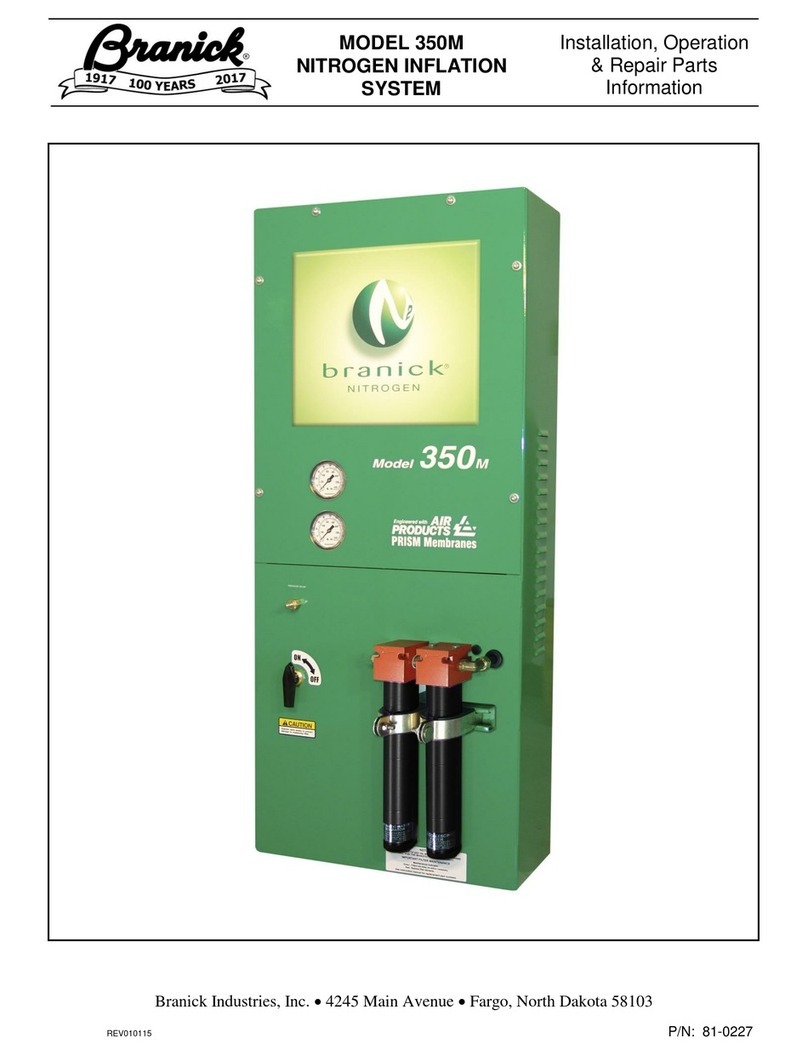Thiele TWN 1450 User manual

MOUNTING INSTRUCTIONS
CHAIN TENSIONERS
GRADES 8 AND 10
THIELE GmbH & Co. KG # change indicator
www.thiele.de | info@thiele.de B09099-B replaces B09099-A
© All rights reserved EN 01.2023 1 | 3
Original in compliance with machinery directive 2006/42/EC
1DESCRIPTIONAND INDENTED USE
THIELE-chain tensioners are exclusively intended for the use in chain slings according
to EN 818-4 for lifting loads or in lashing chains according to EN 12195-3.
These mounting instructions describe the safe use of chain tensioners according to
TWN 1450, TWN 1451 and TWN 1452 for grade 8 and TWN 1454 and TWN 1455 for
grade 10. (TWN = THIELE factory standard)
THIELE chain tensioners are used to adjust the length of individual chain legs, e.g. as
height adjustment for even loading of multi-leg chain slings or for length adjustment
or applying of pre-tensioning forces in lashing chains.
The chain tensioners are marked with the nominal chain size, grade, manufacturer's
mark and traceability code.
Parts of the chain leg to be adjusted are fastened by a clevis system on both sides.
The length is adjusted by turning the central sleeve by means of a lever or ratchet in
relation to the clevis systems at both ends.
The internal trapezoidal threads, which are protected by tube sections, are equipped
with anti-unscrewing devices. The chain tensioners are galvanised to protect them
against corrosion. They are manufactured in the following types:
•with lever,
•with ratchet system.
THIELE chain tensioners comply with the EC Machinery Directive 2006/42/EC and have
a safety factor of min. 4 related to the working load limit (WLL).
The chain tensioners are designed to withstand 20 000 dynamic load changes under
maximum load conditions. In the event of higher loads (e.g. multi-shift/automatic
operation) the working load limit must be reduced.
They are certified by the German Social Accident Insurance (DGUV) for use in chain
slings and are marked with the H4 stamp.
The chain tensioners must exclusively be used
•within the limits of their permissible working load limits or lashing capacities,
•within the permissible slinging or lashing methods,
•within the temperature limits prescribed,
•with suitable sling or lashing chains,
•by trained and authorised persons.
An alternating use for lifting and lashing is not allowed!
Chain tensioners are not intended for the transport of persons!
2SAFETY NOTES
Risk of injury!
Never walk or stay under lifted loads!
Make sure to use hoisting/lashing means
free from defects.
•Operators, fitters and maintenance personnel must in particular observe the
operating instructions of the chain slings in which the chain tensioners are installed,
the documentation of the employers' liability insurance association DGUV V 1,
DGUV R 109-017, DGUV I 209-013 and DGUV I 209-021 as well as the standards
DIN 685-5 and EN 818 6 or EN 12195-3.
•In the Federal Republic of Germany, the Operational Safety Ordinance (BetrSichV)
has to be implemented and the Technical Rule for Industrial Safety TRBS 1201, in
particular annex 1, chapter 2 "Special regulations for the use of working equipment
for lifting loads" must be observed.
•Outside the Federal Republic of Germany the specific provisions issued locally in the
country where the items are used must also be observed.
•The directions given in these operating instructions and specified documentations
relating to safety, assembly, operation, inspection, and maintenance must be made
available to the respective persons.
•Make sure these operating instructions are available in a place near the product
during the time the equipment is used. Please contact the manufacturer if
replacements are needed. See also chapter 9.
•When performing work make sure to wear your personal protective equipment!
•Improper assembly and use may cause personal injury and/or damage to property.
•Assembly and removal as well as inspection and maintenance must exclusively be
carried out by skilled and authorized persons.
•Structural changes are impermissible (e.g. welding, bending).
•Operators must carry out a visual inspection and, if necessary, a functional test of
the safety equipment before each use.
•Never use worn-out, bent or damaged chain tensioners.
•Never expose chain tensioners to loads higher than the specified working load limit.
•Only chain legs and chain tensioners of the same nominal size and grade may be
connected.
•Safety elements must not be excessively stressed or strained operationally.
•Do not twist or knot the chains together.
•In case of multi-leg chain slings never allow for inclination angles of less than 15 °
and in excess of 60 °.
•Avoid bending loads to act on chain tensioners.
•During lifting/hoisting make sure your hands or other body parts do not come into
contact with hoisting means.
•Avoid impacts, e.g. due to abruptly lifting loads with chain in slack condition.
•Operation without properly functioning safety devices (cotter pins, wedges, pins) is
not permitted.
•In the event of doubts about the use, inspection, maintenance or similar things
contact your safety officer or the manufacturer!
THIELE will not be responsible for damage caused through non-observance of the
instructions, rules, standards and notes indicated!
As regards grade 10 THIELE does not give its general approval to the assembly of
components stemming from different manufacturers!
Working under the influence of drugs, medications impairing the sense and/or
alcohol is strictly forbidden!
3COMMISSIONING
Prior to using the lifting points for the first time make sure that
•the lifting points comply with the order and have not been damaged,
•test certificate, statement of compliance, and operating instructions are at hand,
•markings correspond with what is specified in the documentation,
•inspection deadlines and the qualified persons for examinations are determined,
•visibility and functional testing are carried out and documented,
•documentations are safely kept in an orderly manner.
Dispose of the packing in an environmentally compatible way according to local rules.

MOUNTING INSTRUCTIONS
CHAIN TENSIONERS
GRADES 8 AND 10
THIELE GmbH & Co. KG # change indicator
www.thiele.de | info@thiele.de B09099-B replaces B09099-A
© All rights reserved EN 01.2023 2 | 3
4TECHNICAL DATA
4.1 General
When used in lashing chains, the maximum permissible lashing capacity (LC) is obtained
by doubling the working load limit (WLL).
Use is only permitted in sling chains OR in lashing chains.
Tables include only article numbers of standard and not customized parts.
4.2 Chain tensioners TWN 1450 with lever
Nominal
size
Working
load limit
WLL
Lashing
capacity
LC
Stroke
Max.
Article
no.
Mass
[t]
[kN]
[mm]
[kg]
8-8
2,0
40
75
F34179
2,1
10-8
3,15
63
100
F34199
2,7
13-8
5,3
100
120
F34189
4,0
4.3 Chain tensioners TWN 1451 with ratchet
Nominal
size
Working
load limit
WLL
Lashing
capacity
LC
Stroke
Max.
Article
no.
Mass
[t]
[kN]
[mm]
[kg]
8-8
2,0
40
75
F34175
2,5
10-8
3,15
63
100
F34195
3,5
13-8
5,3
100
120
F34185
5,0
4.4 Chain tensioners TWN 1452 with lever
Nominal
size
Working
load limit
WLL
Lashing
capacity
LC
Stroke
Max.
Article
no.
Mass
[t]
[kN]
[mm]
[kg]
13-8
5,3
100
230
F341871
7,2
16-8
8,0
160
280
F34197
11,8
4.5 Chain tensioners TWN 1454 with lever
Nominal
size
Working
load limit
WLL
Lashing
capacity
LC
Stroke
Max.
Article
no.
Mass
[t]
[kN]
[mm]
[kg]
13-10
6,7
130
230
F341877
7,2
16-10
10
200
280
F341977
11,8
4.6 Chain tensioners TWN 1454 with ratchet
Nominal
size
Working
load limit
WLL
Lashing
capacity
LC
Stroke
Max.
Article
no.
Mass
[t]
[kN]
[mm]
[kg]
13-10
6,7
130
230
F341878
8,4
16-10
10
200
280
F341978
13,5
5ASSEMBLY AND REMOVAL
5.1 General
Always assemble and disassemble in an unloaded condition only.!
To dissassemble, remove the components in reverse order.
Only chain and component of same nominal size and grade belong together!
Only connect pins and attachment components of identical grade! (starting with
Ø 13 mm the pins are marked on the front end).
5.2 Assembly of clevis-type fastening system
If necessary, remove dowel pin and pin.
•(A) Place end of chain leg between the lateral clevis
elements.
•(B) Push pin from the side fully into the clevis and
through the last chain link of the leg.
•(C) Drive dowel pin fully in (must not project) to
secure the pin.
The slot must face away from the pin.
•Check the chain runs smoothly!
The dowel pins must only be installed once.
5.3 Disassembly of clevis-type fastening system
•Slacken the respective chain leg.
•(A) Drive dowel pin out using hammer and drift
punch.
•(B) Push pin out.
•(C) Remove the chain.
Suitable drift punches are available by article no. Z03303.
6OPERATION
6.1 Normal use
The force must be applied in the longitudinal direction. The chain tensioner must
remain freely suspended in the chain leg and must not come into contact with other
components.
The chain tensioner is to be operated exclusively by hand movements on the lever or
on the ratchet system.
By rotating the central sleeve, the clevis systems at both ends change their distances.
Make sure that the length is adjusted symmetrically starting from the inner or outer
end position, as this is the only way to ensure that the entire stroke range is available.
Make sure that the chain legs on both sides are not twisted. Vibration can otherwise
cause a significant reduction in the pre-tensioning force, especially when lashing.
When lashing, therefore, secure the chain tensioner directly after tensioning with an
additional safety chain (article no. F341711), which prevents the chain tensioner from
untwisting on its own.
Never use lever extensions (e.g. by means of an attached tube), as this causes an
impermissible pre-tensioning of the chain tensioner and chain, which can lead to an
overloading and even breakage if a load or lashing force is additionally applied!
The lengths of the levers are designed to ensure that the permissible forces are not
exceeded.
The operating direction of the ratchet system is set by switching the small lever to one
of the end positions. In the middle position, the ratchet system is inoperative and the
lever can move freely according to gravity or centrifugal force and may strike
unintentionally.

MOUNTING INSTRUCTIONS
CHAIN TENSIONERS
GRADES 8 AND 10
THIELE GmbH & Co. KG # change indicator
www.thiele.de | info@thiele.de B09099-B replaces B09099-A
© All rights reserved EN 01.2023 3 | 3
6.2 Influence of temperature
The permissible working load limit of the lifting points reduces at elevated
temperatures.
Grade
Temperature range
Remaining WLL
8
-40 °C ≤ t ≤ 200 °C
100 %
200 °C < t ≤ 300 °C
90 %
300 °C < t ≤ 400 °C
75 %
10
-30 °C ≤ t ≤ 200 °C
100 %
200 °C < t ≤ 300 °C
90 %
300 °C < t ≤ 380 °C
60 %
If a tensioner has been exposed to temperatures exceeding the maximum values
specified, it must no longer be used.
6.3 Environmental influence
Chain tensioners must not be used in environments where acids, aggressive or
corrosive chemicals or their fumes are present.
Hot-dip galvanizing or a galvanic treatment is prohibited as well.
Chain tensioners are not suitable for abrasive use in blasting plants.
7SPARE PARTS
Only use original spare parts.
7.1 Spare part sets for clevis fastening system
A set consists of pin and dowel pin.
Nominal size
Article no.
Nominal size
Article no.
8-8
F48352
10-8
F48355
10-10
F48688
13-8
F48358
13-10
F48689
16-8
F48361
16-10
F48690
8INSPECTIONS, MAINTENANCE, DISPOSAL
8.1 General
Inspections and maintenance must be arranged for by the owner!
Inspection intervals shall be determined by the owner!
Inspections must be carried out and documented by competent persons regularly but
at least once a year, or more frequently in case of heavy-duty service. After three years
at the latest they must additionally be examined for cracks. A load test shall never be
considered a substitute for this examination.
The results of the inspection shall be entered into a register (DGUV I 209-062 or
DGUV I 209-063) to be prepared when the chain sling is first used. The register will
show characteristic data of the chains and components as well as identity details.
Immediately stop using chain tensioners that show the following defects:
•missing or illegible identification/marking,
•deformation, elongation or fractures,
•cuts, notches, cracks, incipient cracks, pinching,
•heating beyond permissible limits,
•severe corrosion,
•ratchet system not functioning properly,
•wear by more than 10 %, e.g. bolt diameters,
•missing or defective pin locking device.
8.2 Maintenance
Maintenance and repair work must only be performed by competent persons.
Chain tensioners have only minimum maintenance needs. They should be cleaned if
they are dirty.
Make sure their screw threads can be easily turned. Threads are lubricated in the
factory.
For the rare case of relubrication, first dismantle the unscrewing locks in the form of
dowel pins and then unscrew the outer end pieces from the central sleeve.
Commercially available grease can be used as a lubricant. During assembly, make sure
that the two anti-rotation devices are installed and use new dowel pins. Please contact
the manufacturer for details. Recommendation: Have this work carried out by the
manufacturer.
For the ratchet mechanism a lube nipple has been arranged.
Minor notches and cracks at the rings may be eliminated by careful grinding observing
the maximum cross section reduction requirement of 10 % and avoid making more
severe cuts or scores.
All maintenance and repair activities are to be documented.
8.3 Inspection service
THIELE offers inspection, maintenance and repair services by trained and competent
personnel.
8.4 Disposal
All components and accessories of steel taken out of service are to be scrapped in line
with local regulations and provisions.
8.5 Storage
Tensioners are stored in dry locations at temperatures ranging between 0 and +40 °C.
9THIELE OPERATING AND MOUNTING INSTRUCTIONS
Current operating and installation instructions are available as a PDF download on the
homepage.
10 IMPRINT
THIELE GmbH & Co. KG
Werkstrasse 3
58640 Iserlohn, Germany
Tel.: +49(0)2371/947-0
This manual suits for next models
12
Other Thiele Industrial Equipment manuals

Thiele
Thiele TWN 1472 User manual
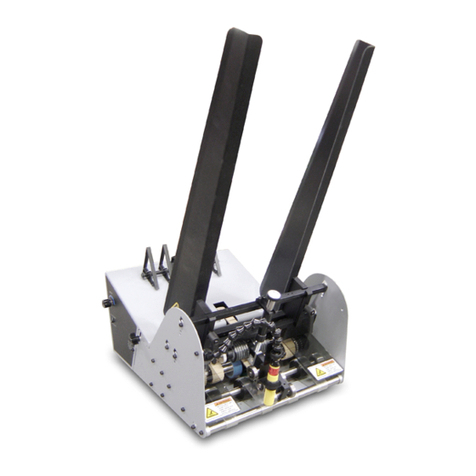
Thiele
Thiele Streamfeeder Value Series User manual

Thiele
Thiele TWN 0812 User manual
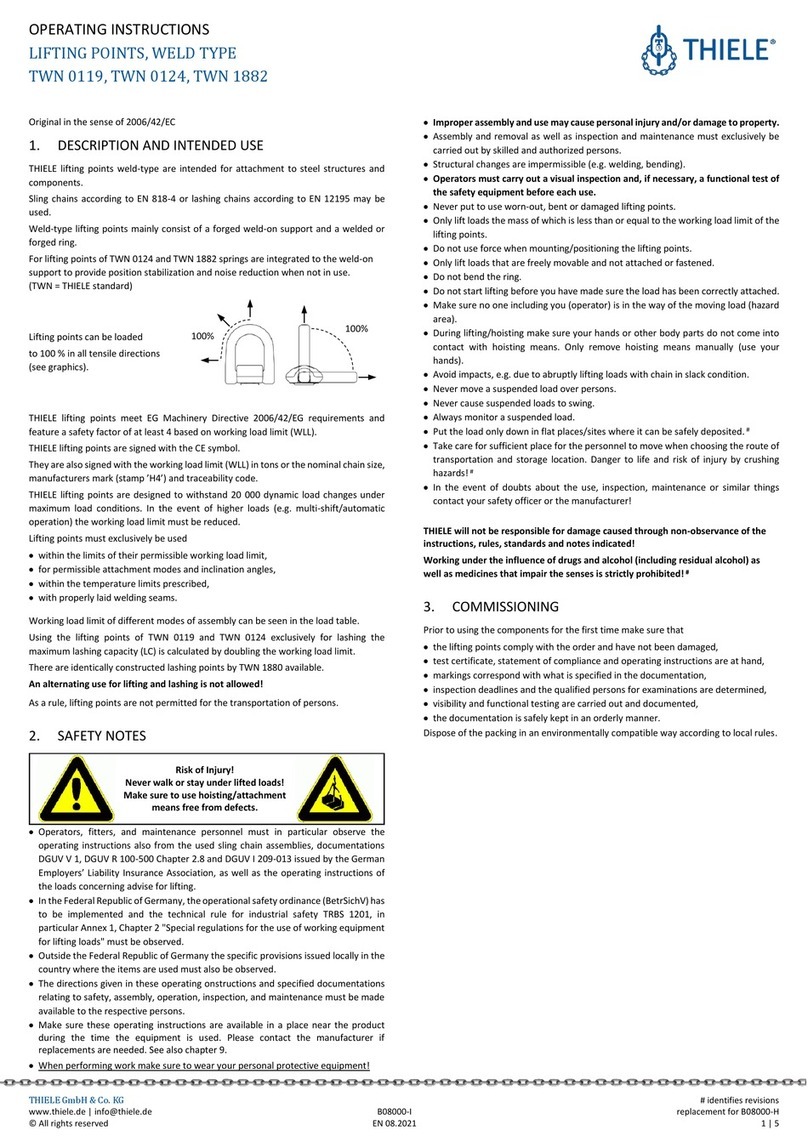
Thiele
Thiele TWN 0119 User manual

Thiele
Thiele TWN 0835/1 User manual
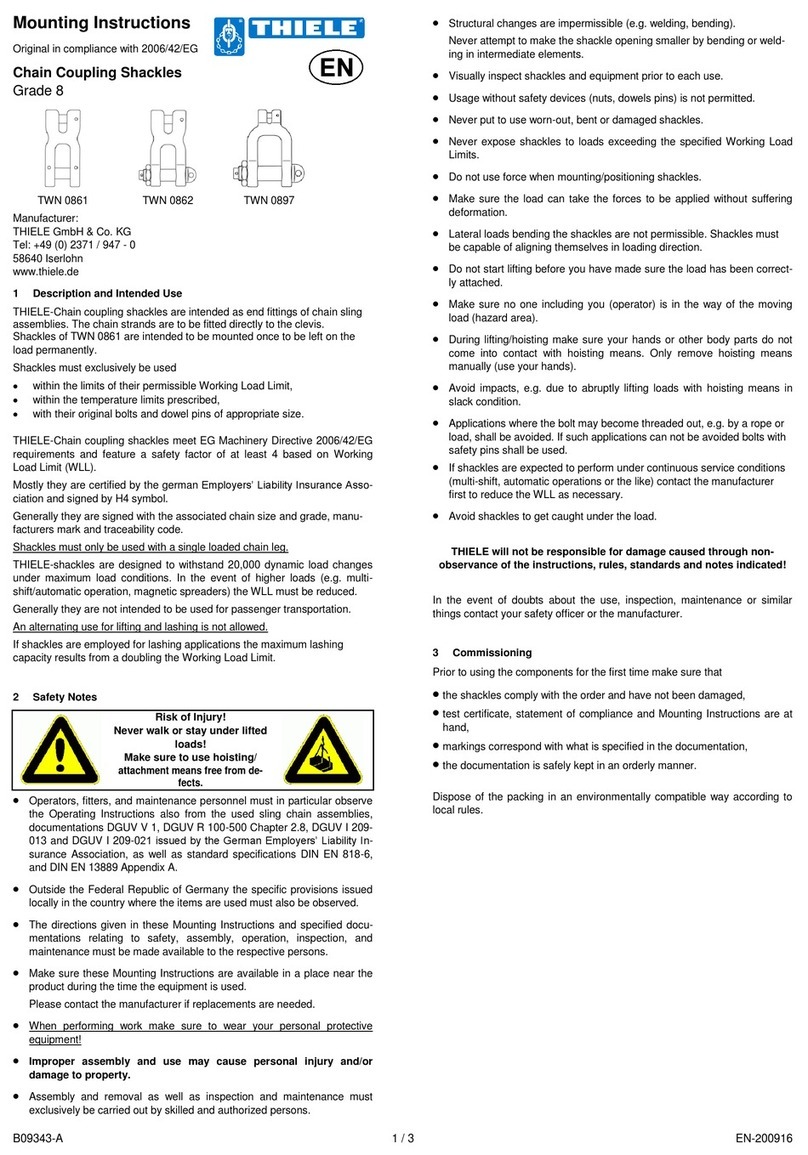
Thiele
Thiele TWN 0861 User manual
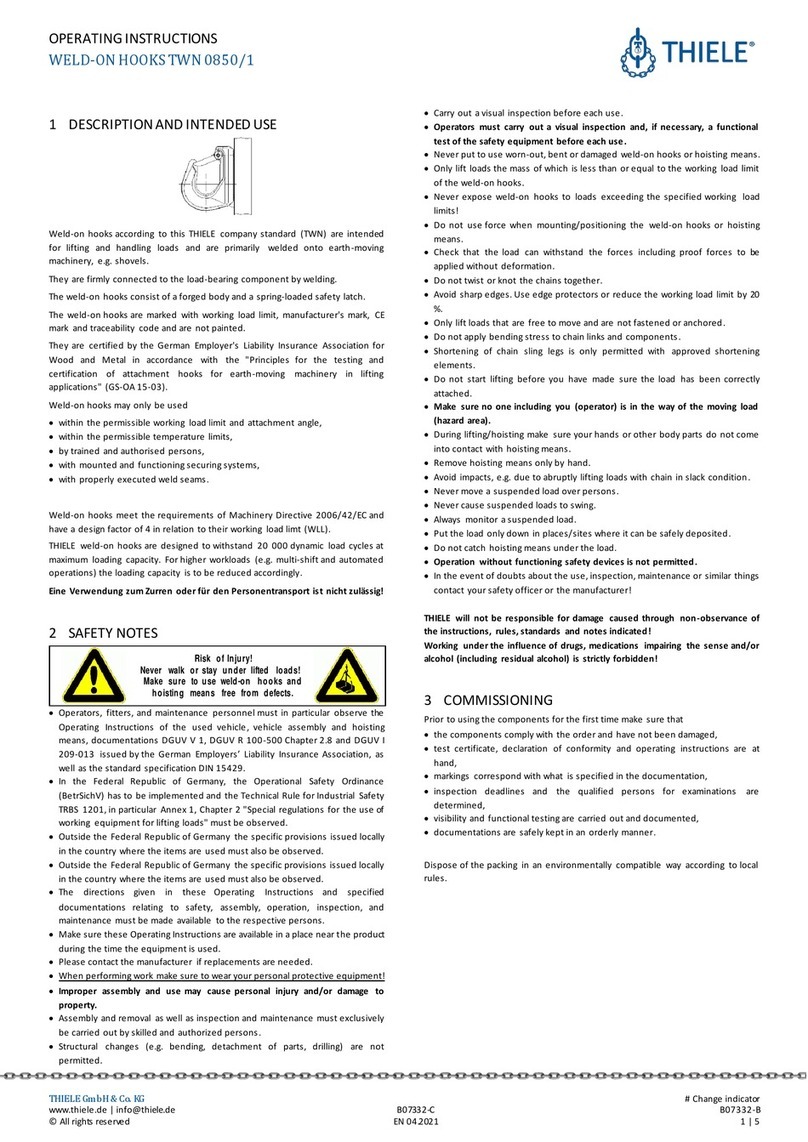
Thiele
Thiele TWN 0850/1 User manual
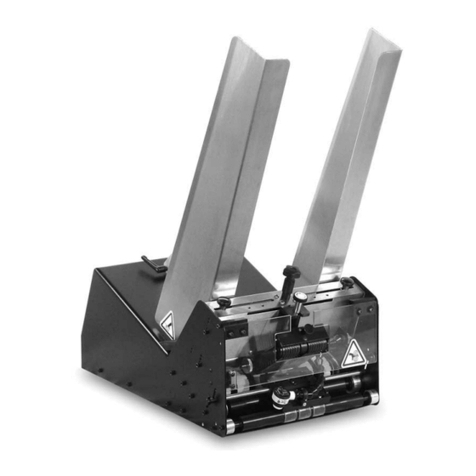
Thiele
Thiele Streamfeeder Reliant 3700 User manual

Thiele
Thiele Streamfeeder Reliant 3700 User manual
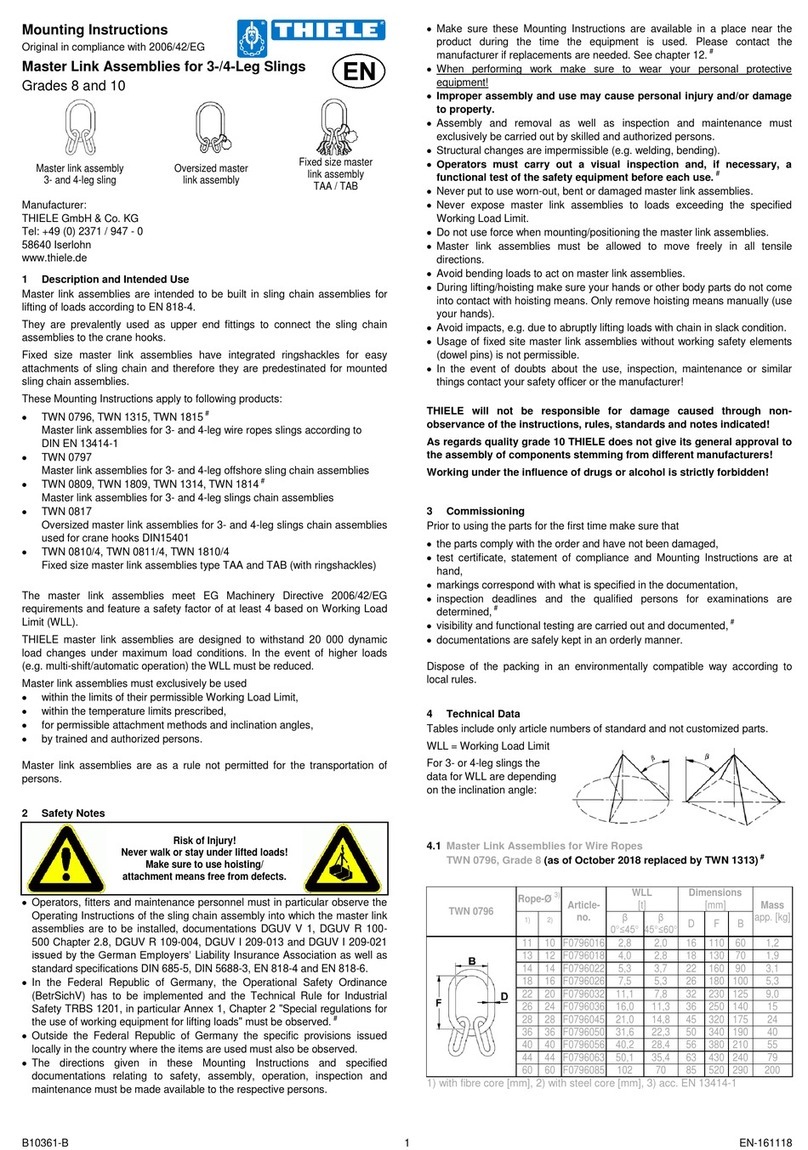
Thiele
Thiele TWN 0796 User manual
